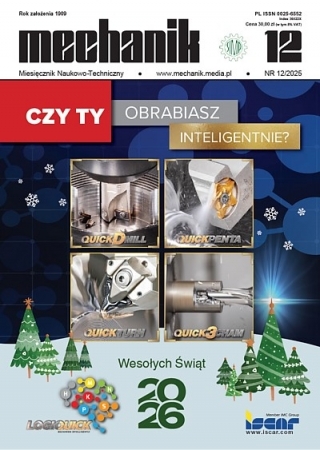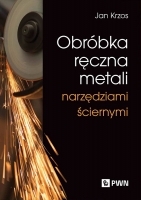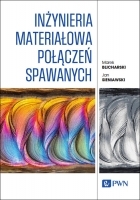Symulacja procesu formowania wióra z użyciem metody elementów skończonych *
Simulation of chip formation process with the use of the Finite Element Method
Mechanik nr 10/2016 - X Szkoła Obróbki Skrawaniem, XXXIX Naukowa Szkoła Obróbki Ściernej
STRESZCZENIE: W pracy przedstawiono modelowanie procesu toczenia metodą elementów skończonych. Symulację prowadzono dla modelu Johnsona-Cooke’a wraz z uwzględnieniem modelu dekohezji. Wyniki symulacji w obszarze formowania wióra porównano z danymi eksperymentalnymi.
SŁOWA KLUCZOWE: symulacja, skrawanie, MES, formowanie wióra
ABSTRACT: In this paper, a method of modeling the turning process with the use of Finite Element Method was presented. Simulation was conducted for Johnson-Cook constitutive material model, taking into account the decohesion model. The results of simulation were compared with experimental data.
KEYWORDS: cutting, FEM, chip formation
BIBLIOGRAFIA / BIBLIOGRAPHY:
- Zhang Y., Outeiro, J.C., Mabrouki T. “On the selection of Johnson-Cook constitutive model parameters for Ti-6Al-4V using three types of numerical models of orthogonal cutting”. Procedia CIRP. Vol. 31 (2015): pp. 112÷117.
- Niesłony P., Grzesik W., Chudy R., Habrat W. “Meshing strategies in FEM simulation of the machining process”. Archives of Civil and Mechanical Engineering. Vol. 15 (2015): pp. 62÷70.
- Niesłony P., Grzesik W., Laskowski P., Sienawski J. “Numerical and experimental analysis of residual stresses generated in the machining of Ti6Al4V titanium alloy”. Procedia CIRP. Vol. 13 (2014): pp. 78÷83.
- Kosmol J., Mieszczak W. „Zastosowanie metody elementów skończonych do modelowania procesu wiercenia”. Modelowanie Inżynierskie. Nr 6 (2009): s. 169÷176.
- Matsumura T., Tamura S. “Cutting Simulation of Titanium Alloy Drilling with Energy Analysis and FEM”. Procedia CIRP. Vol. 31 (2015): pp. 252÷257.
- Sagapuram D., Yeung H., Guo Y., Mahato A., M’Saoubi R., Compton W.D., Chandrasekar S. “On control of flow instabilities in cutting of metals”. CIRP Annals – Manufacturing Technology. Vol. 64 (2015): pp. 49÷52.




















